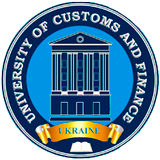ANECHOIC MODE IN THE INFORMATION-MEASURING SYSTEM OF CUSTOMS CONTROL
Abstract
The problem of revealing hidden objects (НО) in the implementation of methods and means of radar detection and recognition in the practice of customs control poses the task of creating a database of images of typical НO artificial origin.
In order to ensure the reliability of the information expert base of the Cus-toms Information and Measurement System (СIМS), it is advisable to use the ane-choic regime created by special methods and methods of its implementation. At the same time, the establishment of the potential level of risk of НO omission (in terms of the concept of acceptable risk in the conditions of uncertainty, given by the corresponding probabilities of false alarm and omission of the object) is a necessary condition for the successful solution of the problem of a priori assess-ment of the reliability and reliability of detection of НO using СIМS. The fulfill-ment of the requirement of sufficient information can be confirmed only by expe- rimental methods implemented in conditions that allow to select active and pas-sive interferences in the process of detection of НO customs control.
The theoretical description of the principle of operation is given, the func-tional scheme is described and the laboratory installation of anechoic chamber (АEC) is experimentally investigated to provide the process of creating a data-base of images of typical НO models and to evaluate the criterion of reliability of potential tactical and technical characteristics of control and measuring equip-ment (KМЕ). The graph of the radiation power and the electromagnetic field in-tensity on the axis in the АEC is shown. In the process of measuring the effective surface of the sample scattering of the models of calibrated НO, the experimental setup showed its efficiency and it was experimentally proved the basic possibility and efficiency of the use of BEC, which with a high level of screening, are able to provide the mode of attestation of КМЕ not only from the point of view of information security of pairs through detection of electromagnetic radiation and interference, but also by positive con-trol measurements of calibrated volume of НO models in the form of a sphere, as well as to confirm or refute the accuracy of the KМЕ measurements used in cus-toms control.
References
Тарасенко Ю. С. Фізичні основи радіолокації. Дніпро: Пороги, 2011. 487 с.
Маслов М. Ю., Самоков Л. М., Скачков Д. В. Испытательная безэхо-вая камера диапазона 30.1200 МГц // Технологии информационного обще-ства: Спецвыпуск Т-Comm, 2009, август. С. 123−128.
Наконечный В. С., Присяжный А. Е., Побережный А. А. Электроди-намическое моделирование с использованием безэховых камер СВЧ. Мето-дика оценки коэффициента безэховости // Системи обробки інформації. 2005. Вип. 9 (49). С.116−123.
Балабуха Н. П., Меньших Н. Л., Солосин В. С. Электромагнитное моделирование низкочастотной рупорной безэховой камеры // Четырнадца-тая ежегодная научная конференция ИТПЭ РАН при поддержке IEEE-APS-LEOS-CHAPTER: Сборник тезисов докладов. Москва: ИТПЭ РАН, 2014. С. 51−53.
Никитенко А. В., Зубов А. С., Булычев Е. В. Моделирование отраже-ния электромагнитных волн от радиопоглощающего материала пирами-дальной формы // Пятнадцатая ежегодная научная конференция ИТПЭ РАН при поддержке IEEE-APS-LEOS-CHAPTER: сборник тезисов докладов. Москва: ИТПЭ РАН, 2014. С. 43.
Строганова Е. П. Развитие принципа достоверности подтверждения соответствия // Технологии информационного общества: спецвыпуск. Т-Comm, 2009, август. С. 138−140.
Радиоэлектронные системы: основы построения и теория: справоч-ник / под ред. Я. Д. Ширмана. Москва: Радиотехника, 2007. 512 с.

 ISSN
ISSN 




